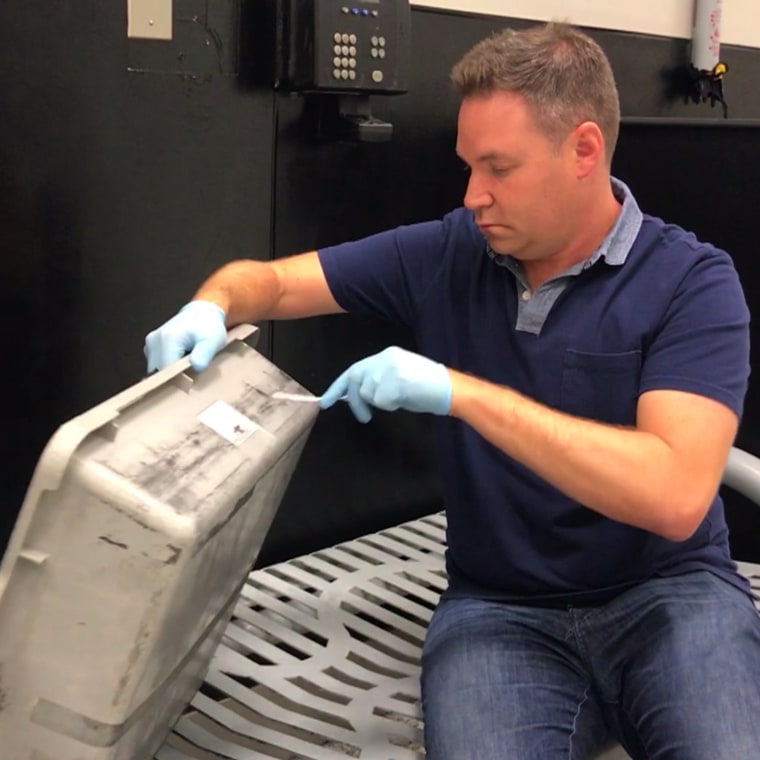A trio of recent flights that were quarantined due to a host of passengers reporting flu-like symptoms has highlighted the chances of getting sick during air travel.
TODAY national investigative correspondent Jeff Rossen recently set out to discover just how much dangerous bacteria is lurking out there in the airport and on planes, and the answer was not pretty.
His investigation came on the heels of an Emirates flight from Dubai to New York City last month that was quarantined after 19 people reported feeling ill. That was followed a day later by 12 passengers on two American Airlines flights being quarantined in Philadelphia with flu-like symptoms after flying from Saudi Arabia.
Get Jeff Rossen's book "Rossen to the Rescue" here
Rossen swabbed everything from the TSA bins at the airport security checkpoint to the armrest, seat belts and tray tables on the plane to see which areas contain the most bacteria that could potentially make people sick.
He began by taking a swab from the plastic bins at the TSA security line and testing it on a germ meter, which measures the level of bacteria. Anything with a score over 100 is considered a fail, and the bins registered a 616 on the meter.
Samples from the swab were also sent to a lab, and the TSA bins were found to have E. Coli, klebsiella and acinetobacter.

"They're all bacteria that we find normally in our intestines so we call them fecal bacteria,'' Dr. Susan Whittier of Columbia University Medical Center told Rossen. "It just means that those surfaces are contaminated with poop."
That bacteria could cause anything from eye infections to tissue infections in healthy people, Whittier said.
Rossen then swabbed a toilet in the airport bathroom and found it was much cleaner than the TSA bin, with a reading of only 32 on the germ meter.
Next up were surfaces on the plane. The armrests registered a 429 reading on the germ meter, the buckle on a seat belt a 589, and the tray tables a sky-high 1,688, with the seat belt also testing positive for acinetobacter.
One tray table also contained the bacteria pseudomonas and stenotrophomonas.
"These are pathogenic bacteria where if they were get in to your eye or get in to a wound, they could definitely cause infection,'' Whittier said. "Plus, they're more difficult to treat with antibiotics, which makes them even more concerning."
What's the takeaway for passengers looking to make it to their destination without getting sick? Bring hand sanitizer or anti-bacterial wipes on the plane, which should kill any bacteria or germs living on surfaces like the tray table, seat belt or armrest.